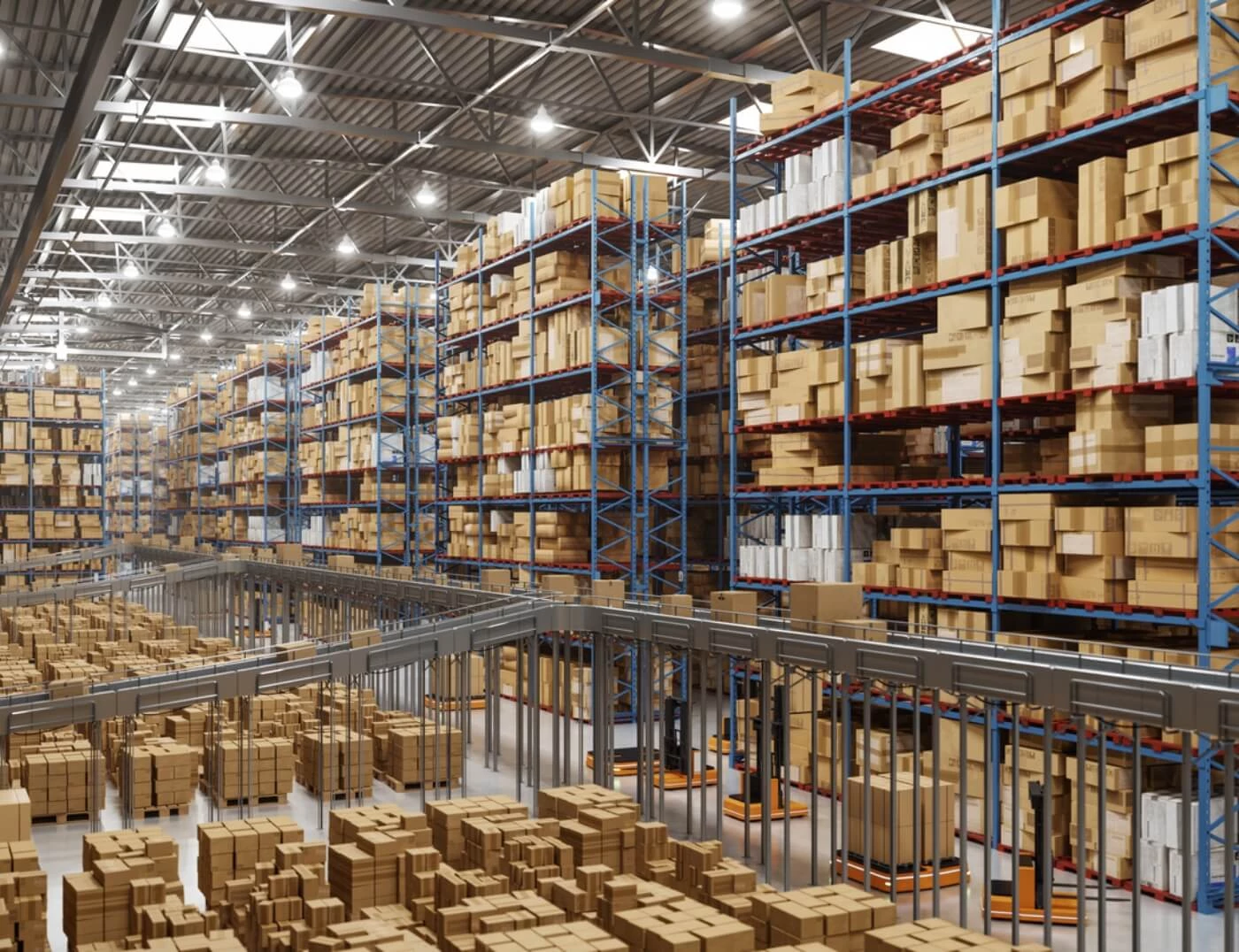
5 Solutions To Fix Warehouse Overflow
- Feb 20, 2025
- Inventory Management

Operating a growing e-commerce business is exciting, but without effective Walmart and Amazon seller inventory management it’s easy to get overwhelmed with inventory planning and control. When D2C inventory is poorly controlled, sellers can quickly find themselves with overstock, resulting in order delays and a cluttered, overcrowded warehouse.
Many e-commerce sellers have been stocking up on inventory due to concerns over tariffs, uncertain supply chains, and fluctuating demand. While this strategy may be smart in the long-run, it also creates significant storage challenges in the short-term. An overcrowded warehouse leads to higher operations costs, more workplace injuries, and delayed orders - causing dissatisfied customers. Other challenges include losses due to misplaced or damaged inventory and cash flow issues. In this blog post we discuss the common causes and solutions to warehouse overflow to help sellers maintain efficiency and profitability.
There are several factors that can contribute to warehouse overflow. Some of the most common include:
Inadequate Inventory Forecasting. When warehouse managers work with inaccurate demand predictions, they can easily order too much of a slow-moving product that ends up sitting and taking up warehouse space.
Poor Warehouse Design. A poorly designed layout means an inefficient use of space that can make warehouses feel cluttered and crowded even if inventory levels are healthy.
Inadequate Warehousing System An inadequate warehousing system contributes to inefficient storage as well as poor organization and inventory tracking that can lead to inaccurate stock levels.
Seasonal Demand Fluctuations in demand throughout the year can cause serious challenges for warehouse managers, leading to too much or too little inventory without proper inventory management for Amazon sellers.
If you find yourself dealing with warehouse overflow, here are five inventory sellers solutions to help tackle the problem:
1. Implement Lean Inventory Management Principles
Lean Inventory Management principles can help warehouse managers overcome excess inventory by minimizing excess stock, optimizing storage space, and improving order flow through better demand forecasting. In addition, implementing just-in-time (JIT) inventory practices can reduce overstock while ensuring products are available when they’re needed.
2. Optimize Warehouse Layout
The best way to maximize available warehouse space in overcrowded warehouses is to organize each area of the warehouse efficiently by implementing smart shelving systems, optimizing aisle spacing, creating designated picking zones, using vertical storage, and categorizing inventory based on demand.
3. Use Third-Party Fulfillment Services
If your warehouse is brimming with excessive inventory, reach out to a 3PL provider that offers scalable 3PL solutions, like G10 Fulfillment, to see how they can help. There are many benefits of outsourcing Amazon and Walmart inventory management. At a basic level, a 3PL allows sellers to inventory transfer, store, and ship inventory from its warehouse locations, which can help sellers clear some or all of their warehouse overflow quickly.
4. Liquidate Excess Inventory
If you find yourself with excess inventory, it may be necessary to run promotions, bundle products, or offer discounts on slow-moving stock to help move inventory and clear space quickly. Once inventory is back to optimal levels, use inventory management strategies to prevent overflow from happening again.
5. Automate Inventory Management
A Warehouse Management System (WMS) is a great tool for helping warehouse managers deal with excess inventory because it provides real-time visibility into inventory levels. This clarity allows managers to pinpoint overflow issues so they can optimize storage space and make informed decisions about managing existing and future inventory.
Warehouse managers must take proactive steps to prevent warehouse overflow, starting with effective inventory management practices, including accurate inventory forecasting and optimized storage solutions. By anticipating demand fluctuations and optimizing how inventory is stored and distributed, businesses can avoid expensive storage issues and improve overall workflow. Here are some strategies to keep your warehouse running smoothly:
Conduct Regular Inventory Audits. Conduct regular inventory checks to manage Walmart and Amazon inventory and identify excess stock.
Adjust Purchasing. After excess inventory is identified, it is important to adjust purchasing to prevent the problem from getting worse.
Use Strategic Promotions. The best way to move products quickly is to create demand through advertising and strategic promotions such as discounts and product bundling.
Diversify Fulfillment Centers. By working with a third party logistics fullfillment provider that has multiple fulfillment centers, like G10 Fulfillment, you can spread out inventory and reduce the risk of overcrowding in a single warehouse.
Negotiate Supplier Agreements. Contact your suppliers to arrange flexible purchasing agreements that allow for smaller, more frequent orders instead of large bulk shipments.
Monitor Market Trends. Stay updated on industry trends, tariffs, and supply chain issues to adjust purchasing strategies as needed.
Let G10 Fulfillment Handle Your Inventory Challenges
Managing inventory and preventing warehouse overflow can be a challenging task for any e-commerce seller. From balancing stock levels to ensuring timely fulfillment, it requires constant attention and effort. You don’t have to handle it all on your own. At G10, we understand the complexities of E-Commerce fulfillment and are dedicated to providing tailored solutions that meet your unique needs. From order management to inventory control, our team of experts is here to help you streamline your fulfillment process and improve customer satisfaction.
Sellers can free up valuable warehouse space, reduce operational headaches, and focus on growing their business by outsourcing fulfillment and inventory management to G10 Fulfillment. Let us take the stress out of logistics so you can keep your e-commerce operations running smoothly and efficiently. Contact us today to get started.
Transform your fulfillment process with cutting-edge integration. Our existing processes and solutions are designed to help you expand into new retailers and channels, providing you with a roadmap to grow your business.
Since 2009, G10 Fulfillment has thrived by prioritizing technology, continually refining our processes to deliver dependable services. Since our inception, we've evolved into trusted partners for a wide array of online and brick-and-mortar retailers. Our services span wholesale distribution to retail and E-Commerce order fulfillment, offering a comprehensive solution.
